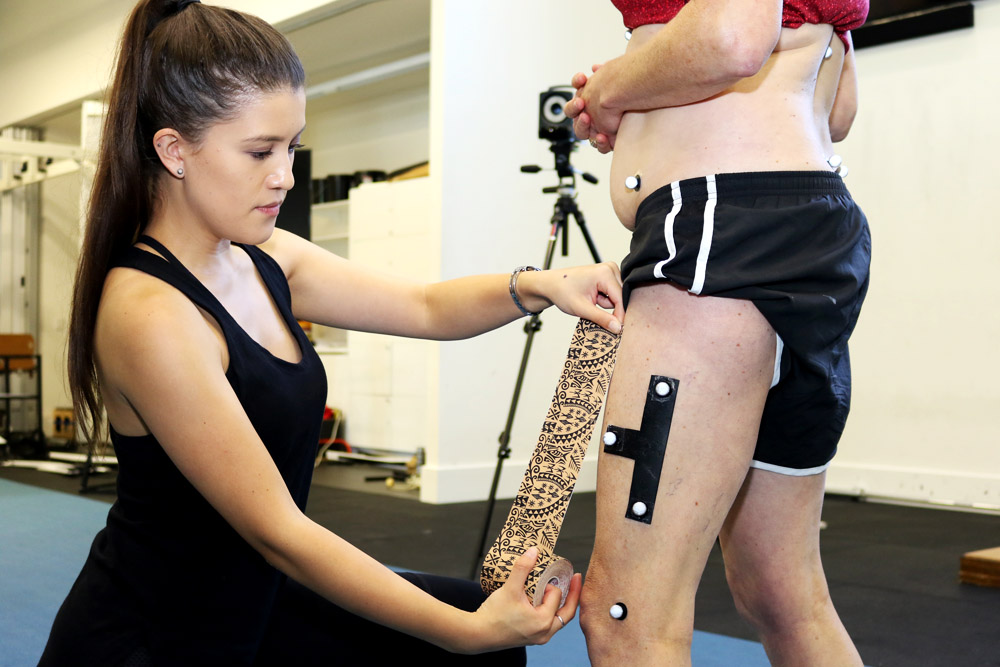Amanda Jones
15 March 2017:It can be an unwanted side effect of physical activity, but researchers at the University of Canberra hope to make hip pain in women less of a hindrance.
Bachelor of Physiotherapy student Nicky Robinson is investigating whether applying flexible sports tape to problem areas alleviates hip pain in females.
“Hip pain causes significant discomfort, loss of quality of life and reduced activity,” Ms Robinson, who is undertaking the research as part of her honours project, said.
“Women often experience pain when walking and exercising, particularly climbing stairs, and often end up avoiding these activities as a result.”
Ms Robinson is looking for women with hip pain, specifically Greater Trochanteric Pain Syndrome (GTPS), to take part in the study.
GTPS is a condition that causes pain over the outside of a person’s upper thigh/s and is caused by inflammation or injury to some of the tissues at the top of the thigh bone.
Ms Robinson will test if using Dynamic Tape®, a unique, strongly elastic tape, could reduce pain and change the way women with GTPS walk.
Clinical Assistant Professor of Physiotherapy Dr Angie Fearon, who is supervising the project, said there currently isn’t any research on the role of sports tape in hip pain.
“We are trying to address this gap and see if it may be a potential treatment option for GTPS.
“We think that the application of the tape may reduce the strain on muscles and tendons, resulting in decreased pain and a change the way people move,” Dr Fearon said.
Assistant Professor in Motor Control and Biomechanics Dr Wayne Spratford is overseeing the data collection aspects of the project.
Dr Spratford, who specialises in biomechanics, said it was important for biomechanists and physiotherapists to work in tandem on projects such as this.
“We can measure to the degree what their joints are doing and how the muscles are contributing to that movement,” Dr Spratford said.
“A clinician needs to be able to visually assess but as biomechanists we work really well with physiotherapists because we can then, in a research space, quantify what they think is happening.”
Motion capture technology will be used to film participants walking on a flat surface for approximately 100 metres with different applications of sports tape. The final tape application will be left on for up to one week to see if it reduces participants’ hip pain.
Participation in the research is subject to a physiotherapist’s approval. People interested in taking part in the study can contact Dr Fearon at angie.fearon@canberra.edu.au or on 6206 8717.



